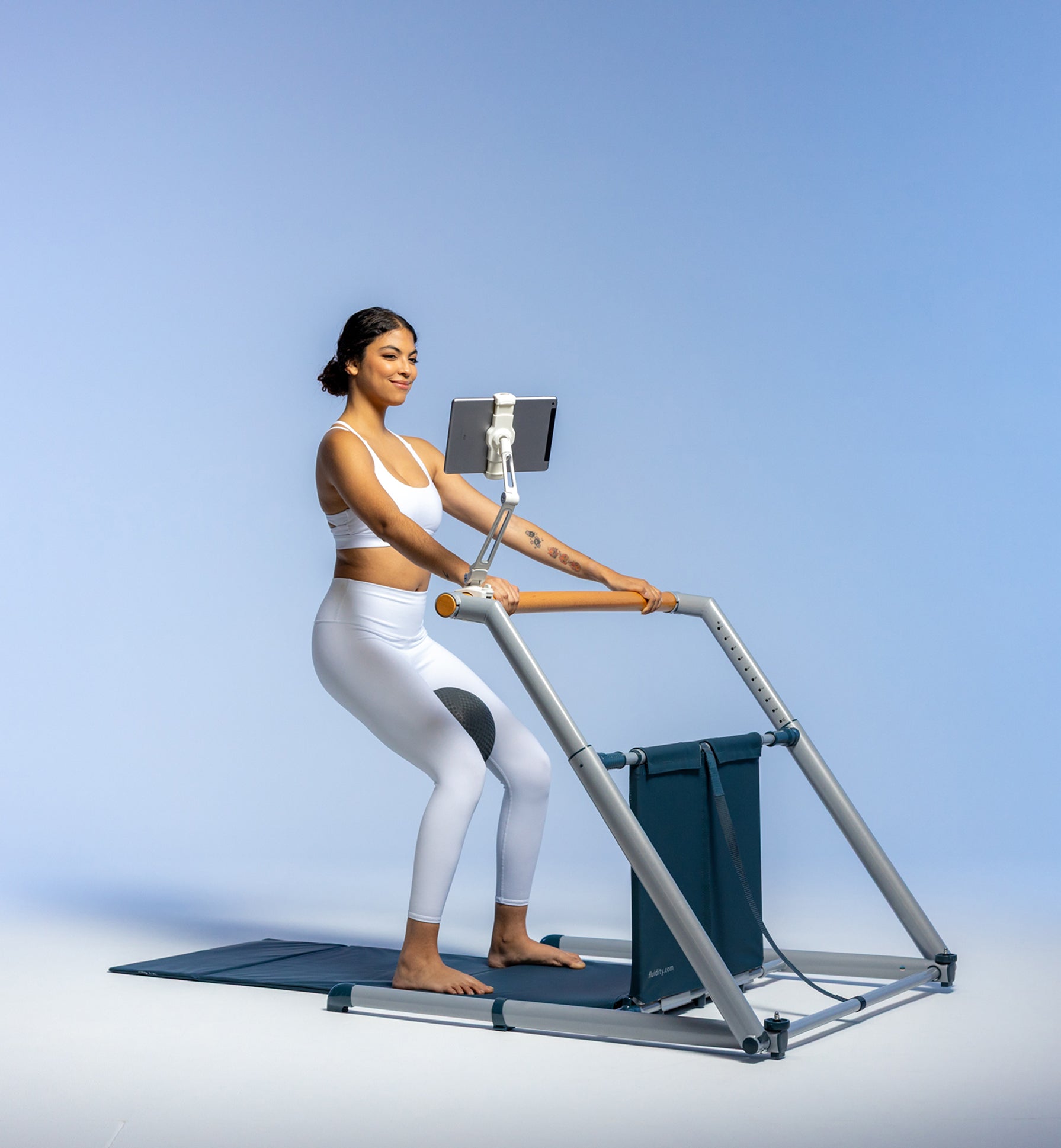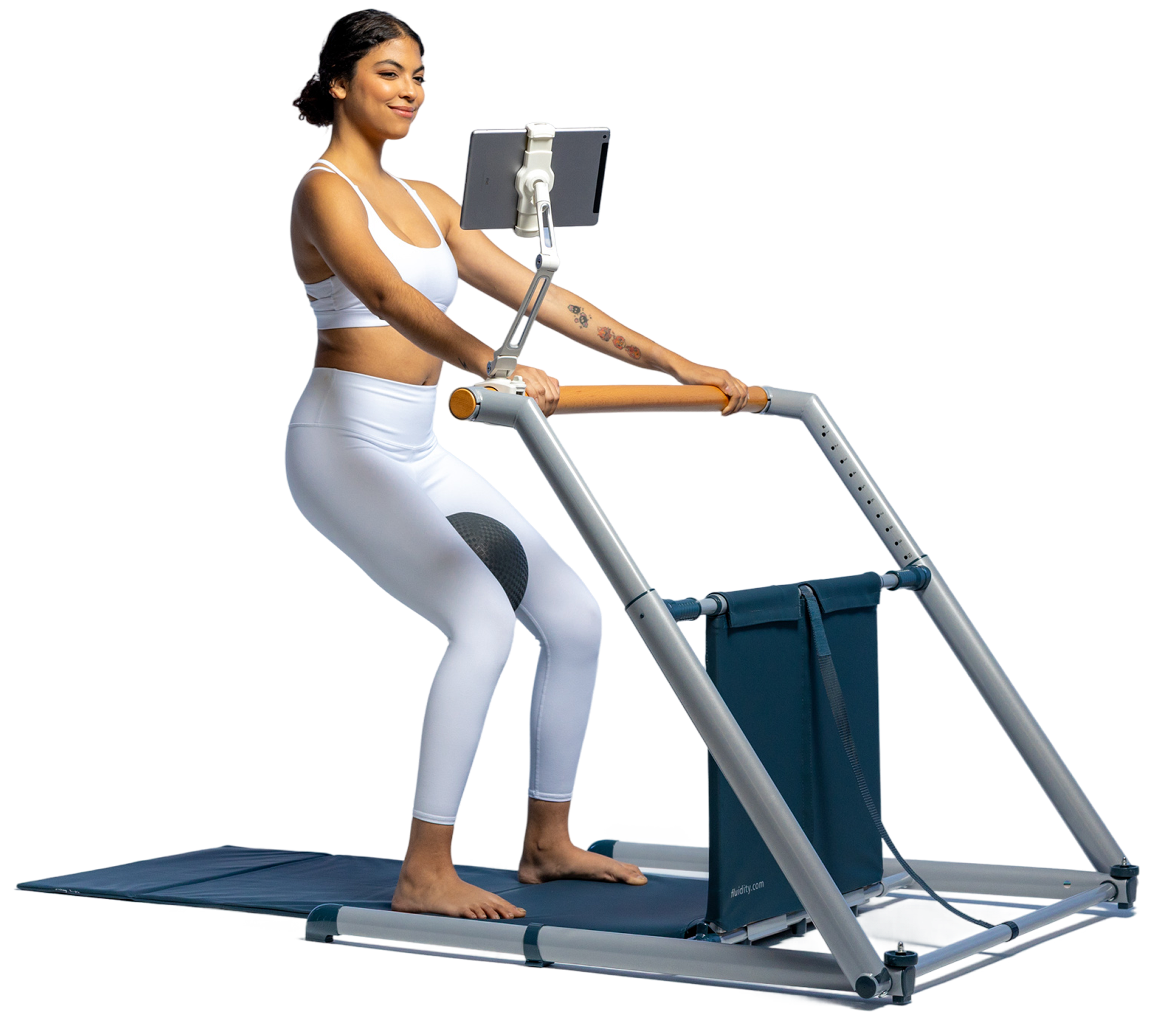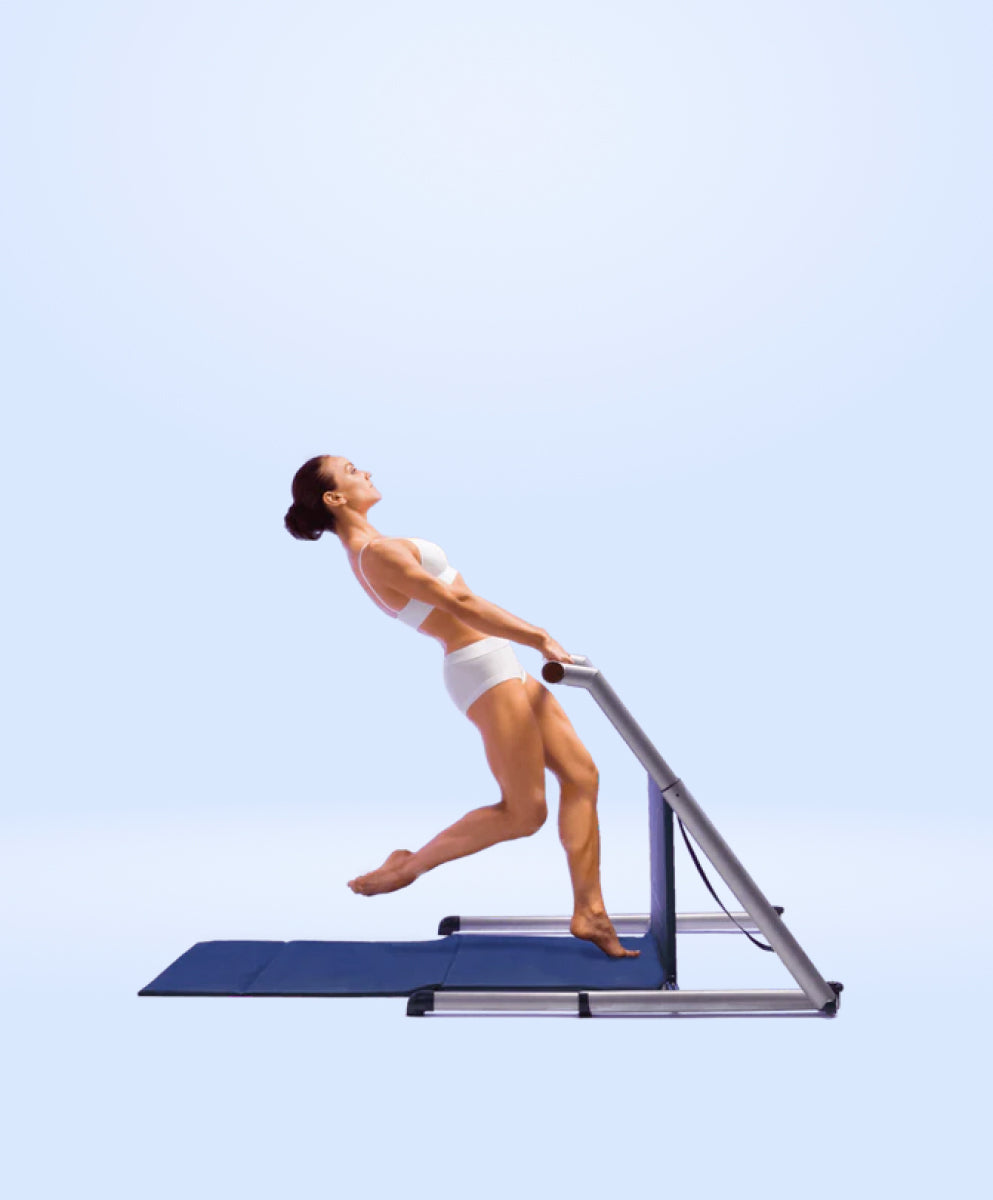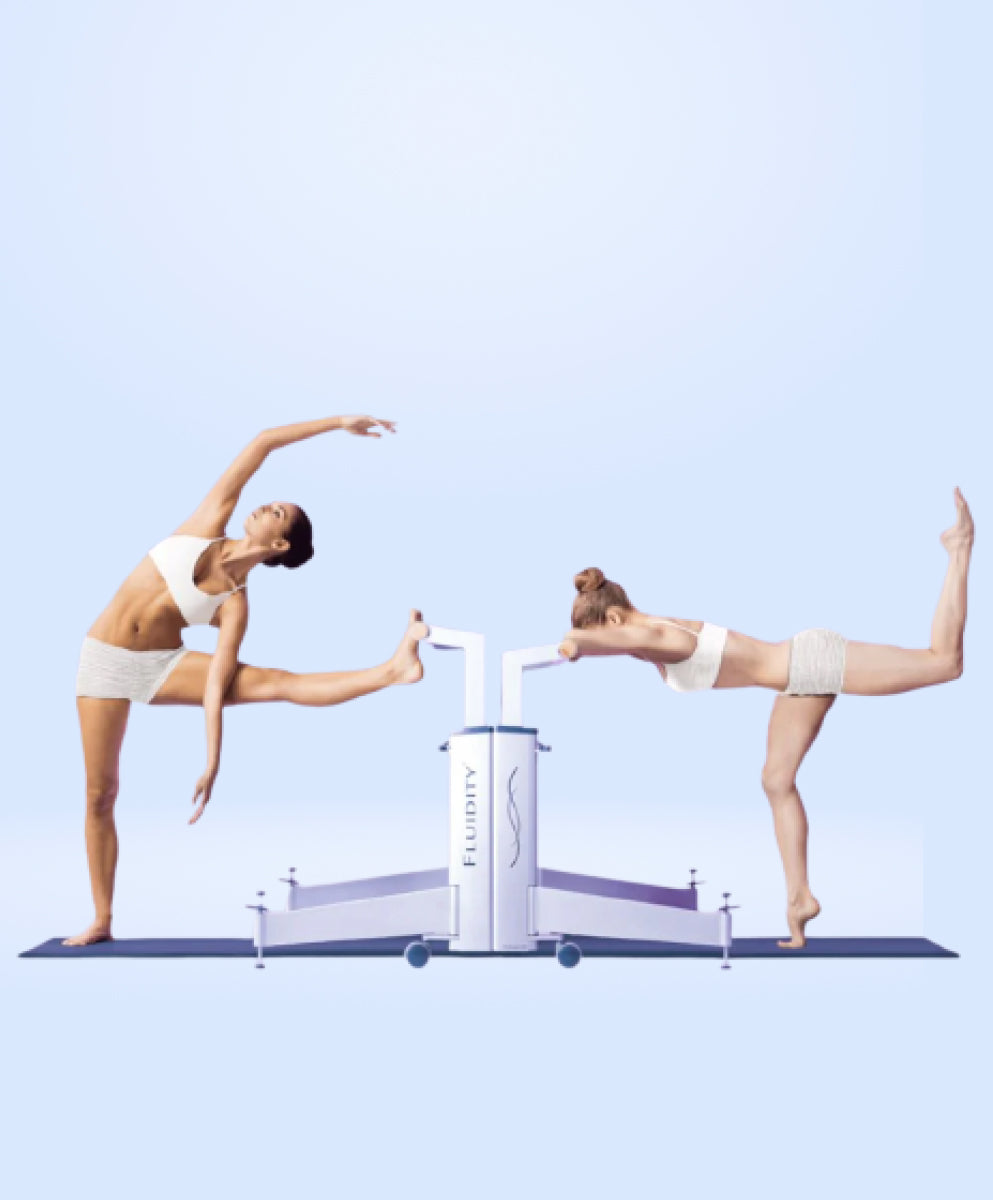Pelvic floor muscle dysfunction (PFMD) occurs when the pelvic floor muscles fail to function appropriately, and are unable to contract and relax correctly either voluntarily or reflexively.
This leads to:
- Predominance of fast-twitch fibers, with slow-twitch endurance fibers losing power and influence.
- Under-active pelvic floor muscles (PFM) becoming "loose and weak."
- Overactive PFM becoming "short and tight and weak."
- PFM incoordination, where muscles contract when they should relax, causing bladder, bowel, and pain issues.
- PFM dyssynergy (dyssynergia), where these muscles contract during activities like urination or bowel movement, when they should relax.
Urinary Incontinence (UI) of all types affects 30-60% of middle-aged and older women [4]
Urinary Incontinence (UI} of all types affects 30-60% of middle-aged and older women [4]
Solving Pelvic Floor Muscle Dysfunction (PFMD) with Fluidity Rx
For all types of pelvic floor muscle dysfunction (PFMD), strengthening and stretching of these muscles are appropriate. In fact it is essential to find homeostasis.

Why Both Matter
If you only strengthen:
You may end up with a tight pelvic floor, overactive, and prone to pain or dysfunction.
If you only stretch:
You risk under-supporting the organs and spine, leading to instability or prolapse.
But when you combine both:
You cultivate a pelvic floor that’s resilient, adaptable, and in harmony with the rest of your body.
Fluidity Rx addresses this by:
- Organizing pelvic floor muscles into a neutral posture and strengthening and stretching them while standing, integrating inner and outer unit muscles. This allows PFM to rest at their neutral length for optimal function.
- Utilizing both, slow and fast-twitch fibers appropriately to improve strength, coordination, flexibility, and posture.
- Unraveling individual compensation patterns of dysfunction with a whole-body approach, addressing the complexity of each person’s unique dysfunction.

Fluidity Rx for Everyone
Fluidity Rx is for everyone – men and women. It uses precise verbal instructions and movements in a neutral spine position supported by Fluidity Rx Stability Devices—the optimal position for PFM contraction and relaxation—to activate the PFM and train both fast and slow twitch muscle fibers, maintaining the ideal proportion of each fiber type.
Women with Stress Urinary Incontinence are 17 times more likely to heal if they strengthen their pelvic-floor muscles [1]
Women with Stress Urinary Incontinence are 17 times more likely to heal if they strengthen their pelvic-floor muscles [1]
Unmasking Pelvic Floor Muscle Dysfunction with Fluidity Rx







